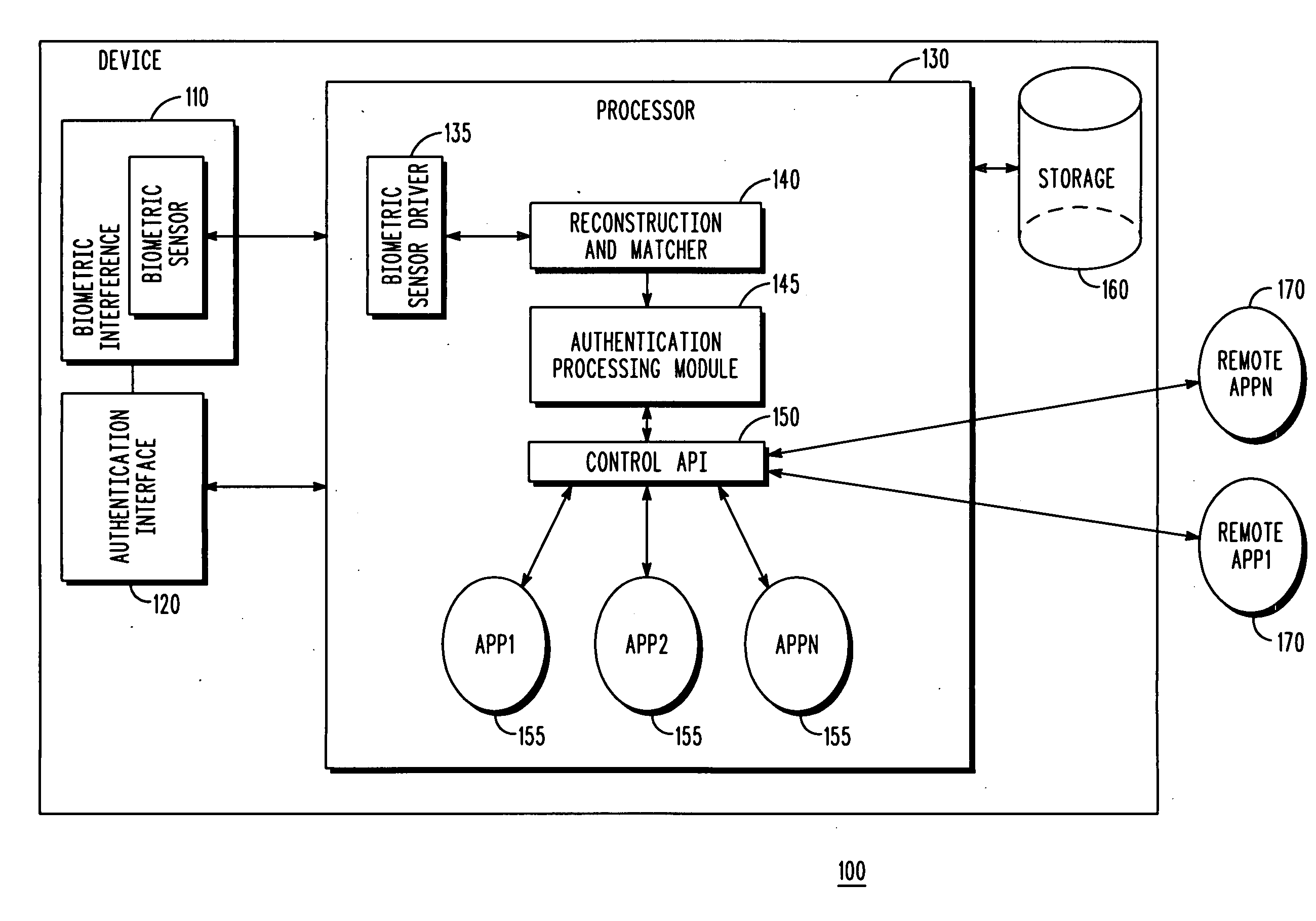Biometric authentication based upon usage history
a biometric authentication and usage history technology, applied in the field of biometric authentication, can solve the problems of users ignoring the biometric feature altogether, poor performance, and high failure ra
- Summary
- Abstract
- Description
- Claims
- Application Information
AI Technical Summary
Benefits of technology
Problems solved by technology
Method used
Image
Examples
Embodiment Construction
[0014]Generally speaking, pursuant to the various embodiments, customized biometric authentication for a user is provided based at least in part on the usage history and learning capabilities of the user. This customized biometric authentication teaches the user to submit improved biometric samples in order to eventually achieve a good sample quality, updates a false rejection ratio (FRR) of the user as biometric samples are submitted, and provides the user with an alternative authentication method when the user's match score is not yet equal to a match score threshold value. Those skilled in the art will realize that the above recognized advantages and other advantages described herein are merely illustrative and are not meant to be a complete rendering of all of the advantages of the various embodiments.
[0015]For devices with biometric security capability, the accuracy of the sensor, defined by false accept ratio (FAR) and false reject ratio (FRR), and supporting authentication al...
PUM
 Login to View More
Login to View More Abstract
Description
Claims
Application Information
 Login to View More
Login to View More - R&D
- Intellectual Property
- Life Sciences
- Materials
- Tech Scout
- Unparalleled Data Quality
- Higher Quality Content
- 60% Fewer Hallucinations
Browse by: Latest US Patents, China's latest patents, Technical Efficacy Thesaurus, Application Domain, Technology Topic, Popular Technical Reports.
© 2025 PatSnap. All rights reserved.Legal|Privacy policy|Modern Slavery Act Transparency Statement|Sitemap|About US| Contact US: help@patsnap.com



